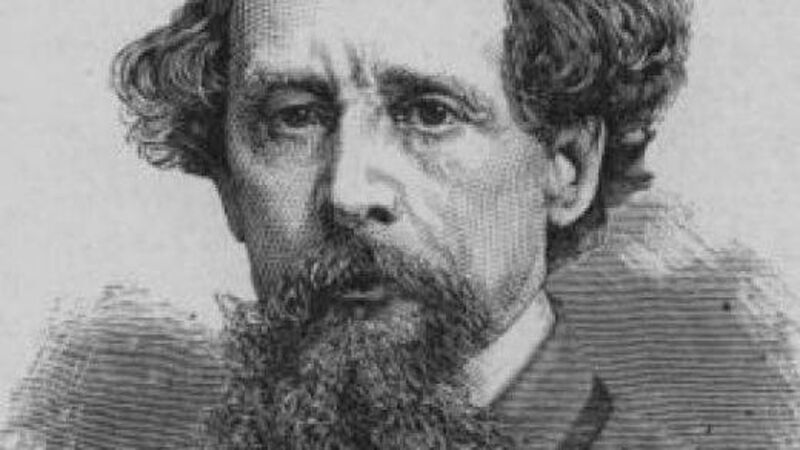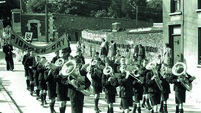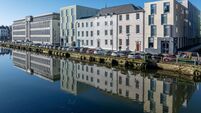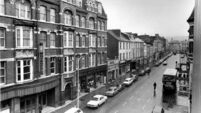Opera House sell-out and kissing the Blarney stone: When Charles Dickens came to Cork

Charles Dickens visited Cork in 1858.
“I am sure I have always thought of Christmas time, when it has come round ….as a good time; a kind, forgiving, charitable, pleasant time; the only time I know of, in the long calender of the year, when men and women seem by one consent to open their shut-up hearts freely, and to think of people below them as if they really were fellow passengers to the grave and not another race of creatures bound on other journeys” - A Christmas Carol
First published on December 19, 1843, A Christmas Carol by Charles Dickens was an instant bestseller.
Within the days leading up to Christmas Eve, it had sold out.
Inspired by a visit Dickens made to a charitable school for destitute children in London, this novella shone a light on society’s treatment of the poor and gave hope of redemption to those who chose to look the other way.
Almost two centuries later the popularity of this story has not waned and its sentiment still endures as the bedrock of festive goodwill.
Many fine stage productions of Dickens’ quintessential Christmas tale have tugged on Corkonian heartstrings down through the years.
To this day, A Christmas Carol remains a staple in the calendar of festive events in Cork, reminding us of the true meaning of the season.
The most thrilling and authentic rendering delivered to a Leeside audience, however, was surely given in 1858, at the Athenaeum – the present-day Cork Opera House, by the great Charles Dickens himself.
The author, a celebrity in his own lifetime, gave three sell-out readings in the city centre theatre which were said to have been met with great anticipation.
In 1858, Dickens embarked on a reading tour of Britain and Ireland.
Having previously read from his works only at charitable events, he discovered he enjoyed these deliveries as enthusiastically as the audience received them, noting “I have long held the opinion, and have long acted on the opinion, that in these times whatever brings a public man and his public face to face, on terms of mutual confidence and respect, is a good thing.”
Having delighted audiences in Dublin and Belfast, next came the turn of the Cork public to come face to face with the Victorian author.
Staying at The Imperial Hotel, the Grande Dame of Cork herself, for the duration of his stay, he performed a private reading for a few privileged guests.
It was at the Athenaeum however, that the audiences would reach fever pitch.
As a skilled and charismatic performer, Dickens would bring his characters to life in a way that only he could.
Ebenezer Scrooge had come to Cork and the audience couldn’t get enough of him.
The Cork Examiner captured the excitement of the large audience, especially in the galleries, writing, “The cram showed intellectual entertainment to be most favoured amongst the democracy.’’
The newspaper went on to describe the eagerly awaited author and “the peculiarities of his appearance, the extreme elegance of his toilette, his handsome yet careworn features, his American moustache and beard and those large wonderful eyes which seemed to fascinate everyone’s attention.”
The reporter gave insight into Dickens’ captivating performance for those not fortunate enough to secure a place in the theatre.
“His voice is full and mellow, strong without being noisy, and of the most versatile quality.
"He can speak with every muscle and fine line of his face and though he does not make much use of his hands, now and then he does startle with a somewhat vehement or fantastical action.
"All these aids are combined to make Scrooge more miserly, hard and exacting, his nephew more good-humoured and forbearant and the ghost of Marley more transparent,” the reporter said.
While in Cork the celebrated wordsmith enjoyed some local tradition and culture.
Although never one to be short of the gift of eloquence, he kissed the Blarney Stone and took in a tour of Cobh.
On the evening of his final reading in Cork, Dickens was presented with sketches by the students of the School of Design who had copied images of the popular writer from portraits.
Such was his delight that he autographed and dated each one causing the Cork Examiner to declare him, “both personally and in his writings the most popular of living novelists.”
Dickens described the character of Ebenezer Scrooge as a “squeezing, wrenching, grasping, clutching, covetous old sinner.”
In many ways, the character appeared to be the antithesis of the personable and socially minded author who often used his celebrity and resources to aid charitable institutions and raise awareness of the plight of the poor.
Dickens was nonetheless an entrepreneur and this first reading tour was a business venture.
His visit to Cork had been a triumph and he wrote to his brother informing him.
“Cork was an immense success. We found upward of a thousand stalls let for the three readings. A great many people were turned away too on the last night.”







